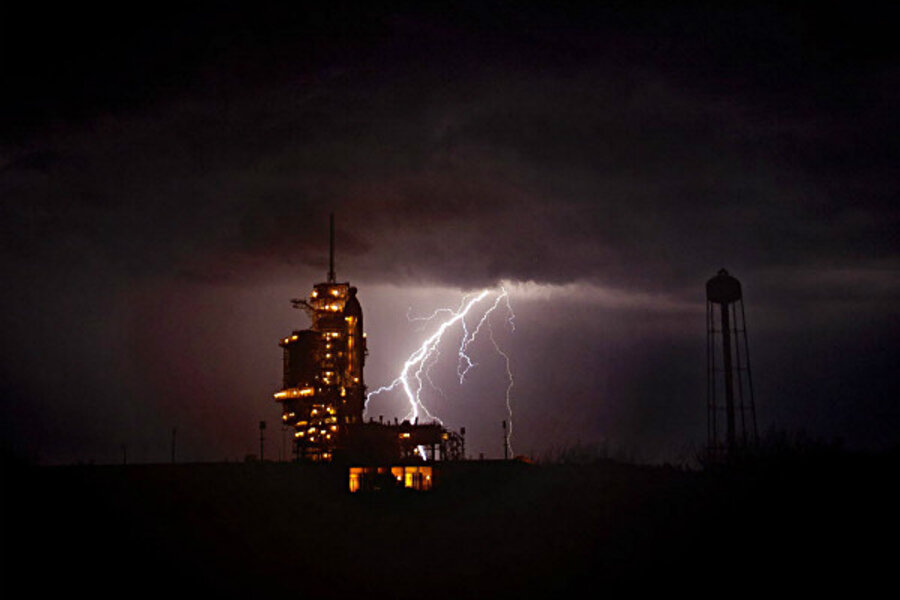Is there an antimatter mirror universe? Massive space-based detector seeks to find out.
Loading...
| Geneva
A seven-tonne particle detector parked for over a year on the International Space Station (ISS) aims to establish whether there is an unseen "dark universe" woven into the cosmos, the scientist leading the project said on Wednesday.
And the detector, the Alpha Magnetic Spectrometer or AMS, has already broken all records in registering some 17 billion cosmic rays and storing data on them for analysis, Nobel physics laureate Samuel Ting told a news conference.
"The question is: where is the universe made from anti-matter?" said Ting. "It could be out there somewhere far away producing particles that we could detect with the AMS."
Physicists say that the event 13.7 billion years ago that brought the known universe into existence and has been dubbed the "Big Bang" must have created equal amounts of matter and anti-matter. But then anti-matter largely disappeared.
Why that happened is one of the great mysteries of the cosmos which are being investigated through the AMS and scientific analysts back on the ground at CERN, the European particle physics research centre where Ting spoke.
The purpose of the AMS programme, he said, "is to search for phenomena that so far we have not had the imagination or the technology to discover".
Some researchers have suggested that the invisible "dark matter" estimated to make up about 25 percent of the known universe could be linked to anti-matter, but others say that is highly unlikely.
Wafting veil
These scientists argue that anti-matter could not survive in the close proximity to parts of the visible cosmos that latest observations suggest dark matter occupies - sometimes like a wafting veil between planets and stars.
Matter and anti-matter are almost identical, with the same mass but opposite spin and energy charges. They can form separate parts of some elementary particles but if they are mixed together they are both destroyed instantaneously.
Ting was speaking at a news conference with a team of U.S. astronauts who took the detector, which was developed and built at CERN, up to the ISS in May last year on the last mission of the U.S. space shuttle Endeavour.
He said that so far the $2 billion detector, with its powerful magnets that bend particles with positive and negative charges in different directions, had functioned perfectly and not one of its multiple backup systems had been needed so far.
Ting, a 75-year-old professor at the Massachusetts Institute of Technology in Boston, supervises the research on the material gathered from the AMS from CERN, guiding a team of some 500 scientists in many countries, including Russia and China.
He is however cautious about how long it will take for real discoveries to compare with the sighting announced this month of a totally new particle, believed to be the long-sought Higgs Boson, in CERN's Large Hadron Collider.
The boson is part of a force called the Higgs Field that turned the minute pieces of flying debris after the Big Bang into solid matter, bringing them together to form galaxies, stars and planets, and later life.
Asked when he expected to be able to report the first indications of dark matter or of an anti-matter mirror universe, Ting replied: "As late as possible," explaining that the analysis had to be done scrupulously and "step by step".
It would be at least 50 years "before anyone would be foolish enough to launch an experiment like this again" now that the U.S. space programme was shut down and current Chinese and Russian spacecraft could not take a load like the AMS, he said. (Editing by Mark Heinrich)







